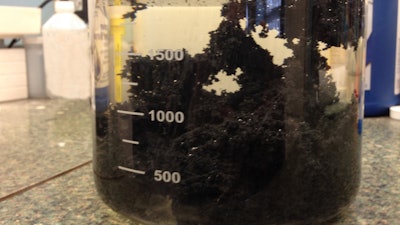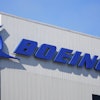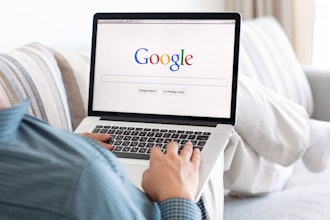
Any company or service provider that washes forklift, vehicle or equipment batteries must meet federal and local wastewater requirements for effluent, including those under EPA’s Resource Conservation and Recovery Act (RCRA), which gives the agency the authority to control hazardous waste from the “cradle-to-grave.” This includes the generation, transportation, treatment, storage and disposal of hazardous waste. Failing to do so can result in severe fines that quickly escalate.
Cleaning the batteries is vital to extend their service life and for safety. Typical operation can result not only in vented acid vapor accumulating on the battery but also acid discharge from over watering. Corrosion can also cause battery discharge, which requires battery washing and high-pressure washing may be needed to break up corrosion. However, the resulting wash water becomes wastewater that often contains particles of lead and other heavy metals as well as rust.
Under the Clean Water Act, the EPA has identified 65 pollutants and classes of pollutants as “toxic pollutants”, of which 126 specific substances have been designated “priority” toxic pollutants. Among the priority list are a variety of metals commonly used in batteries such as lead, copper, zinc, nickel and cadmium.
For many companies and service providers this means installing a battery wash water treatment system that effectively separate the contaminants from the water. Sabo Industrial offers space saving treatment equipment specifically designed for the battery industry. The equipment consists of a battery wash cabinet and a 100 gallon batch unit for proper treatment of the wastewater.
However, traditional wastewater treatment systems can be complex, often requiring multiple steps, a variety of chemicals and a considerable amount of labor. Too often technicians must still monitor the equipment in person. This usually requires oversight of mixing and separation, adding of chemicals and other tasks required to keep the process moving. Even then, the water produced can still fall below mandated requirements.
Although paying to have battery wash water hauled away is an option, it can be expensive, costing as much as $700 per 55-gallon drum in the U.S. In contrast, it is much more cost effective to treat the wastewater at its source, so the treated effluent can be legally discharged and the sludge will pass a TCLP (Toxicity Characteristics Leaching Procedure) test and can be disposed of as non-hazardous waste in a local landfill.
Fortunately, complying with EPA and local wastewater regulation has become much easier with a variety of more effective wastewater treatment systems. Such systems not only reliably meet regulatory wastewater requirements, but also significantly reduce the cost of treatment, labor and disposal when the proper Sabo Industrial equipment and Cleartreat® separating agents are used.
 Under EPA guidelines, it's crucial for battery manufacturers to manage waste, from generation to disposal, to avoid hefty fines.Sabo Industrial
Under EPA guidelines, it's crucial for battery manufacturers to manage waste, from generation to disposal, to avoid hefty fines.Sabo Industrial
Cost-Effective Wastewater Treatment
In contrast to labor-intensive processes, more effective battery wash water treatment can help to promote safety and efficiency while lowering costs for many companies and service providers.
In the process, adjusting pH can be required since the pH of some battery wash water can be quite acidic. And multiple steps may be required to remove targeted contaminants, such as copper and other metals, from the wastewater.
While complying with EPA and locally mandated requirements, such batch systems separate heavy metals, suspended solids and emulsified oil and encapsulate the contaminants, producing an easily de-waterable sludge.
The water is typically separated using bag filters before it is legally discharged. The resulting solids are non-leachable and are considered non-hazardous, so will pass all required testing.
These systems are only available as manual batch processors and can provide a legally dischargeable effluent. A new, fully customized system is not always required. In many cases, it can be faster and more cost effective to add to or modify a current wastewater treatment system when this is feasible.
Because every waste stream is unique to its application, each wastewater treatment solution must be suited to or specifically tailored to the application. The first step in evaluating the potential cost savings and effectiveness of a new system is to sample the wastewater to determine its chemical make-up followed by a full review of local water authority requirements.
The volume of wastewater that will be treated is also analyzed, to determine the batch unit and options required. Considerations include the size restrictions so the system fits within the battery manufacturer’s available footprint.
Sabo Industrial Corp. developed a true closed loop wastewater treatment system. The system operates with a rear storage tank of fresh water, treatment with separating agents that cause heavy metals to be encapsulated and filter bags that collect the resulting sludge. Then the treated water can be either legally discharged or recycled back to the rear tank for reuse as a water source.
Separating Agents
Despite the advances in battery wash water treatment equipment any such system requires effective separating agents which agglomerate with the solids in the wastewater so the solids can be safely and effectively separated out.
Because of the importance of separating agents for wastewater treatment, Sabo Industrial uses a special type of bentonite clay in a line of wastewater treatment chemicals called ClearTreat. This line of wastewater treatment chemicals is formulated to break oil and water emulsion, provide heavy metals removal and promote flocculation, agglomeration and suspended solids removal.
Bentonite has a large specific surface area with a negative charge that makes it a particularly effective adsorbent and ion exchange for wastewater treatment applications to remove heavy metals, organic pollutants, nutrients, etc. It has the ability to swell 16 times its normal weight when introduced and mixed with wastewater. As such, bentonite is essential to effectively encapsulate the materials. This can sometimes be achieved in one-step treatment, which lowers process and disposal costs.
In contrast, polymer-based products do not encapsulate the toxins, so systems that use that type of treatment are prone to having waste products leach back out over time or upon further agitation, which can result in compliance violations.
As a point of comparison, with polymer treated floc, when shaken in a container, it will go right back into a wastewater solution. However, with Cleartreat separating agents, when shaken in a container the contaminants will remain encapsulated in the floc and the effluent is still crystal clear.
As an example of effective battery wash water treatment, one versatile batch unit, the EV1004 100 Gallon Tank with 4 Bag Filters, is widely used in the industry and can reliably achieve metals removal, labor/material savings and a legally dischargeable effluent. Because of the acidic nature and heavy metals nature of the waste stream, a 50% dilution is typically required and a pH adjustment is needed to bring it to a neutral state (typically achieved with caustic soda beads).
Due to the aggressive nature of the waste stream, the most effective treatment requires two Cleartreat products. The first product is added to increase solids concentration, absorb dissolved iron and enhance flocculation efficiency. The second product is to achieve total encapsulation of the remaining metals, specifically copper and lead. In fact, lead, copper and zinc become virtually undetectable in the treated wastewater and encapsulated sludge.
A pressure washer hook-up allows the operating unit to function as a totally enclosed system for water reuse. If preferred, it can also be designed for discharge.
The bottom line is that today’s more effective battery wash water treatment systems, along with the most effective Sabo Industrial equipment and Cleartreat separating agents, can provide any company or service provider that washes forklift, vehicle or equipment batteries with an easy, economical alternative so they remain compliant with local ordinances and the EPA. Although there is a cost to these systems, they do not require much attention and can easily be more affordable than paying fines or hauling.























